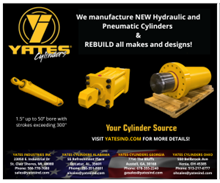ArcelorMittal Welcomes European Commission's Steel Action Plan
06/11/2013 - On 11 June 2013, the European Commission published an action plan for the European steel industry, the first such initiative since the Davignon Plan in 1977.
The Steel Action Plan proposes a series of measures that aim to shore up the industry’s long term competitiveness.
“With today’s blueprint for the revival of the steel sector, we send a clear signal to the industry that it is a strategically important sector for Europe and a motor for growth,” said European Commission vice president Antonio Tajani, commissioner for industry and entrepreneurship. "The steel industry has a promising future in Europe,” Tajani added. “By continuing to lead in innovative products, its traditional strength, it can achieve a globally competitive edge.”
ArcelorMittal has welcomed the action plan and views this as an important first step to support a recovery of the steel industry in Europe. “However it is now essential that the dialogue is continued and that the measures proposed are further developed and implemented,” said Robrecht Himpe, CEO of ArcelorMittal Flat Carbon Europe and member of the ArcelorMittal management committee. “We hope that all stakeholders, including governments and trade unions, will contribute constructively in this implementation.”
The current challenges
Steel demand in Europe today remains 30% below pre-crisis levels, as the European steel industry continues to face the repercussions of low demand and overcapacity. Employment in the sector also fell by 10% from 2007 to 2011.
The EU however remains the second largest producer of steel in the world, with an output of more than 177 million tonnes of steel a year, accounting for 11% of global output and employing more than 360, 000 people. Global steel demand is expected to increase to 2.3bn tonnes by 2025, underlining the importance of the European Commission’s work to develop a new political strategy for the steel sector. The main pillars of this strategy are:
- Ensuring the right regulatory framework is put in place: measures include assessing the overall regulatory burden on the steel industry from different policies and its impact on competitiveness, by the end of 2013
- Addressing skills needs and easing restructuring: promoting skills development and measures targeting youth employment in the sector, to boost the sector's competitiveness as well as exploring the possibility of using relevant EU funds to help workers find alternative employment in cases of production site closures. The European Social Fund and the European Globalisation Adjustment Fund will continue to contribute to this effort. All EU funds will follow the principle of regional smart specialization, taking into account the durability of the investment in creating and maintaining jobs in a particular region
- Boosting demand for steel: measures include implementing targeted action to stimulate demand in the car and sustainable construction sectors
- Improving access to foreign markets and ensuring a level playing field to support EU steel exports, fight unfair practices and ensure access to vital raw materials. Scrap markets will be monitored to enhance security of supply for EU steelmakers using scrap as a raw material
- Ensuring affordable energy costs: the completion of the internal energy market and diversification of supply as well as increased energy efficiency will contribute to lower costs. The Commission is willing to provide guidance on long term electricity contracts between suppliers and customers to increase the predictability of such costs. In the short term reduction of energy costs for energy intensive industry will depend on member states. The Commission is committed to work towards this goal
- Climate policy: the EU’s 2030 climate policy framework will be key to ensuring the competitiveness of the industry, as will be the negotiations for a binding international agreement on climate change. Manufacturing of certain forged ferrous products will be added to the carbon leakage list and member states are invited to earmark revenue from the emissions trading scheme (ETS) auction to R&D projects for energy intensive industries.
- Boosting innovation: promotion of environmentally friendly technologies through the development of new types of steel, and stimulation of innovative R&D, particularly for the very expensive pilot and demonstration phases. For 2014-2020, research and innovation is to be funded mainly through the Horizon 2020 program, which places a strong emphasis on industrial leadership in innovation. The steel sector also benefits from the European Innovation Partnership for Raw materials and for 280 million over the same programming period from the Research Fund for Coal and Steel
As part of the action plan, the Commission is proposing to formally create a high-level group which will oversee the implementation of the plan. The Commission will take stock of the progress made, in 12 months’ time.



.jpg?lang=en-US&ext=.jpg)
.gif?width=220&height=200&mediaprotectionhash=374c6b9a31f2b2fbfc7937391034efb46fd57feba997b9ad2ae9a0bd3d48329d&ext=.gif)

.gif?width=100&height=200&mediaprotectionhash=e2d5b15d68f84f22038524be6c58e5268d67b7f44494b544e29a8d53c5b959ba&ext=.gif)
